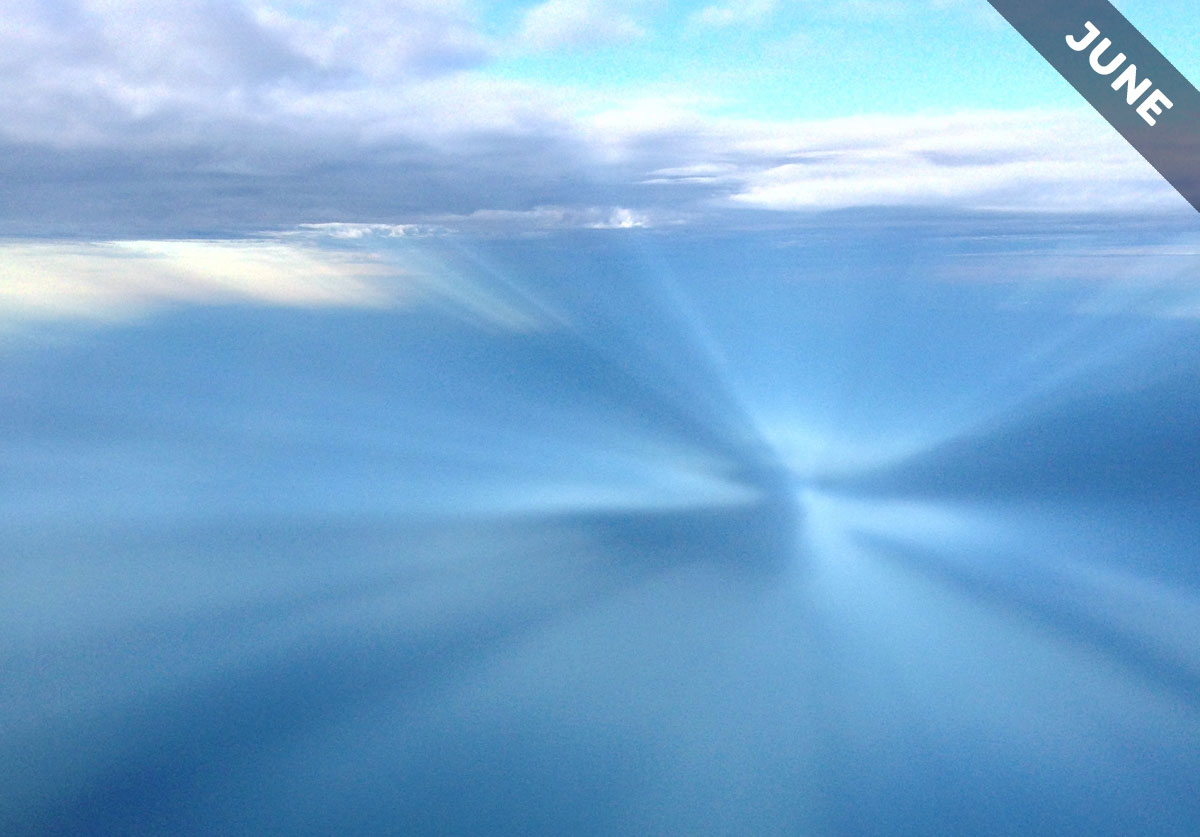Anti-crepuscular Rays – An Atmospheric Optical Illusion
If you turn your back to the Sun when it is low in the sky to look towards the opposite horizon, you might just be fortunate enough to see dramatic beams of light and shade known as anti-crepuscular rays. They’ll stretch across the sky and appear to converge on a point directly opposite the Sun. The conditions needed for this light effect to appear mean you can usually only see it around sunrise or sunset – unless, that is, you are looking out from an aircraft, as Amber Keen was when she spotted these anti-crepuscular rays over the Atlantic Ocean on a flight from Florida to North Carolina, US.
Anti-crepuscular rays are closely related to the much more familiar crepuscular rays, the streaks of sunlight that appear to burst out through gaps in clouds or around clouds in front of the Sun. These too can have a fanned appearance, but they appear to radiate from the Sun rather than converge on the point directly opposite it like anti-crepuscular rays do.
These sunbeams only appear when the shadows cast by clouds – or any other obstacles, for that matter – are rendered visible by atmospheric haze. The shadows show up as beams of light and shade by the way of haze in the lower atmosphere, like dust, pollen, or diffuse water droplets scatter the sunlight. Anti-crepuscular rays viewed from the ground depend on the shadows being cast right across the sky, and so the best clouds for producing them are tall ones like Cumulus congestus and Cumulonimbus positioned on the horizon in front of the low Sun. Though the long sunbeams are as good as parallel, they appear to converge on a point because of the illusion of perspective. This effect looks most pronounced when you observe anti-crepuscular rays, like Amber did, from the window of an aircraft.
Amber’s rays would have been caused by sunlight shining through gaps in the Altocumulus clouds just above her aircraft. They seem to be converging in on a single point, the rays are in fact parallel. This effect of perspective is like looking down the length of railway tracks, and it is most apparent when you can see the beams all around you like this due to shadows from the Sun and clouds directly behind you being cast onto atmospheric haze below. Anti-crepuscular rays seem to converge on the antisolar point, an imaginary point at the far end of a line running from the Sun through whatever’s casting the shadows.
Next time you see crepuscular rays – the light beams fanning out from the Sun behind clouds – take a look in the opposite direction. If you’re down on the ground and the Sun is low or if you are up in an aircraft, you might elusive anti-crepuscular rays revealing one of the sky’s great optical illusions.
Anti-crepuscular rays spotted over the Atlantic Ocean, on a flight from Florida to North Carolina, US, by Amber Keen. View this image in the photo gallery.



